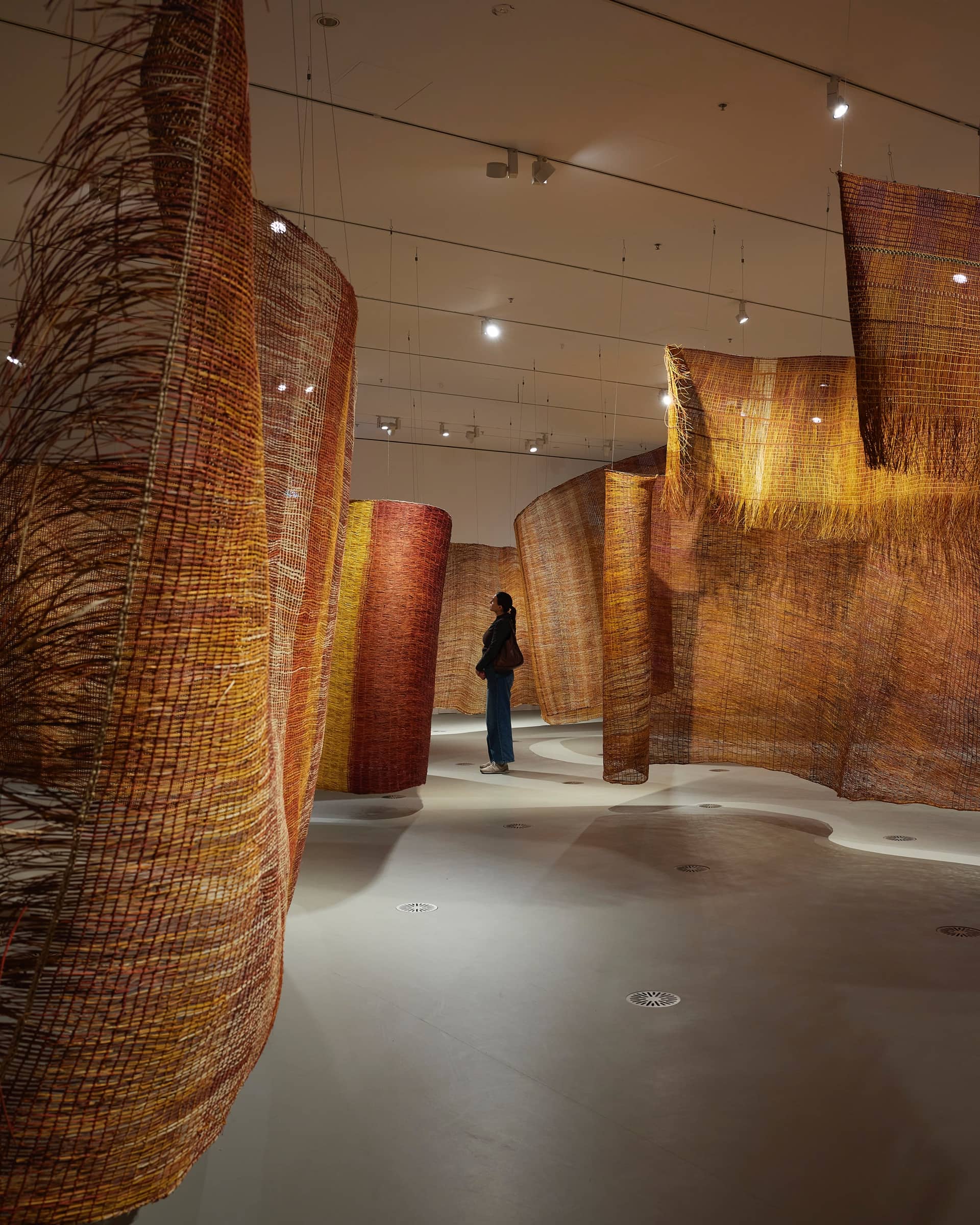I couldn’t resist sharing with you a snippet from John McDonald’s Sydney Morning Herald review of the current NGV Triennial exhibition in Melbourne:
“None of this prepares us for the shock of the first room, which features Mun-dirra, a weaving of more than 100 metres, made from pandanus and other bush materials by women from the Arnhemland community of Maningrida. Anybody who thinks “ho hum, another grass mat” needs to experience the overwhelming physical presence of this work, which feels more like a feat of architecture than sculpture. The project was commissioned by the NGV in 2021, but the 13 weavers went far beyond anything the curators anticipated.
“Mun-dirra is a dramatic illustration of the idea that a fibre work can transcend the art-craft cliches and become an aesthetic event of the first order. It also eliminates any suggestion that First Nations works require categories of their own. The sheer scale and ambition of this piece makes many works by artists from Europe or America seem half-hearted”.
A little background on this wonder : In 2021 the NGV, through the Lisa Fox Commissions Series, commissioned a woven sculpture from the women of Maningrida on the mid-Arnhemland coast. Mun-dirra (2023) took 13 women two years and more than 35,000 threads to make, becoming, to the Gallery’s surprise and delight, Australia’s largest woven sculpture. (Could it be the world’s largest as well?) More than 35,000 threads from an estimated 4,400 pandanus leaves have been used to make Mun-dirra – all hand-harvested, dyed and woven by the women. If it were laid out as a single continuous thread, it would run to 56 kilometres.
Traditionally, Mun-dirra is a fish fence, used for guiding river fish into traps.
The artists involved were Doreen Jinggarrabarra, Freda (1) Ali Wayartja, Freda (2) Ali, Indra Prudence, Zoe Prudence, Gabriella Garrimara, Maureen Ali, Jennifer Prudence, Anthea Stewart, Bonnie Burarngarra, Lorna Jingubarrangunyja, Michelle Baker, and Cecille Baker.
Freda Ali Wayartja and Bonnie Burarngarra won a NATSIA Award in 2022 for their woven fish trap.
For Burarra women, weaving is not just a means of creating functional objects, it is also a way for individuals to express their identity and cultural heritage.

